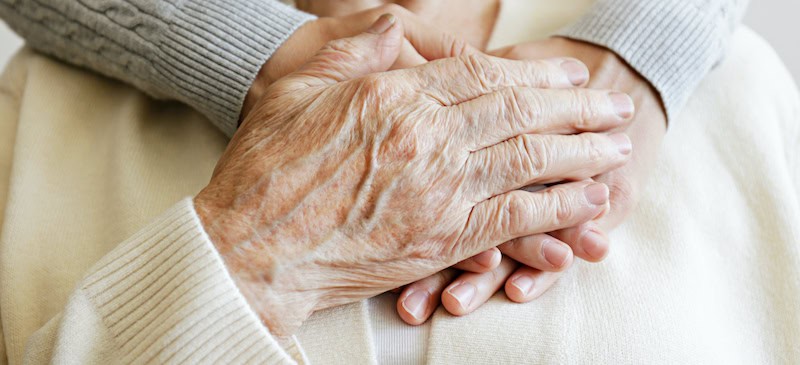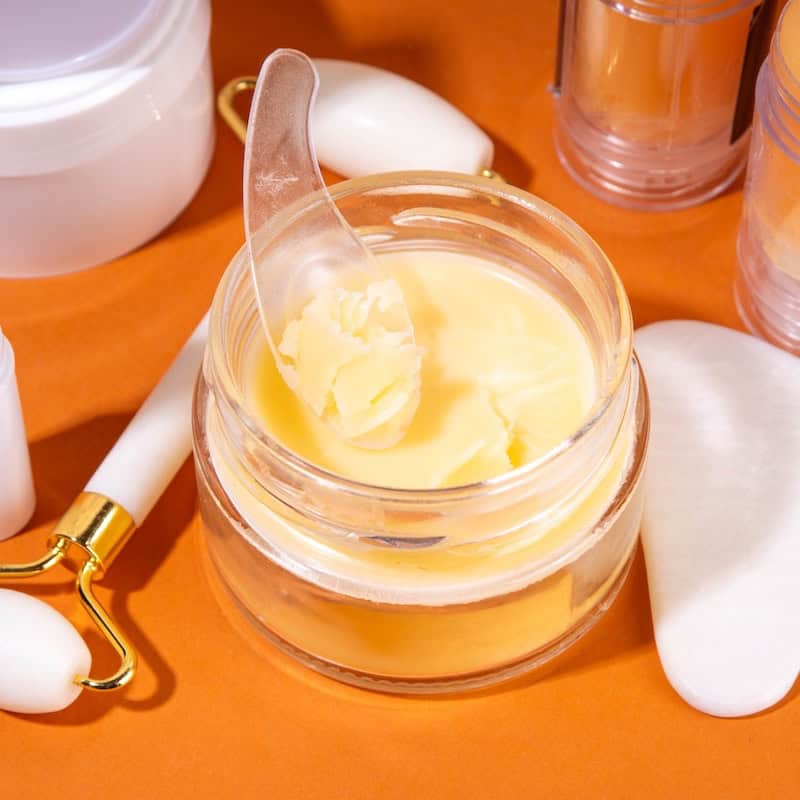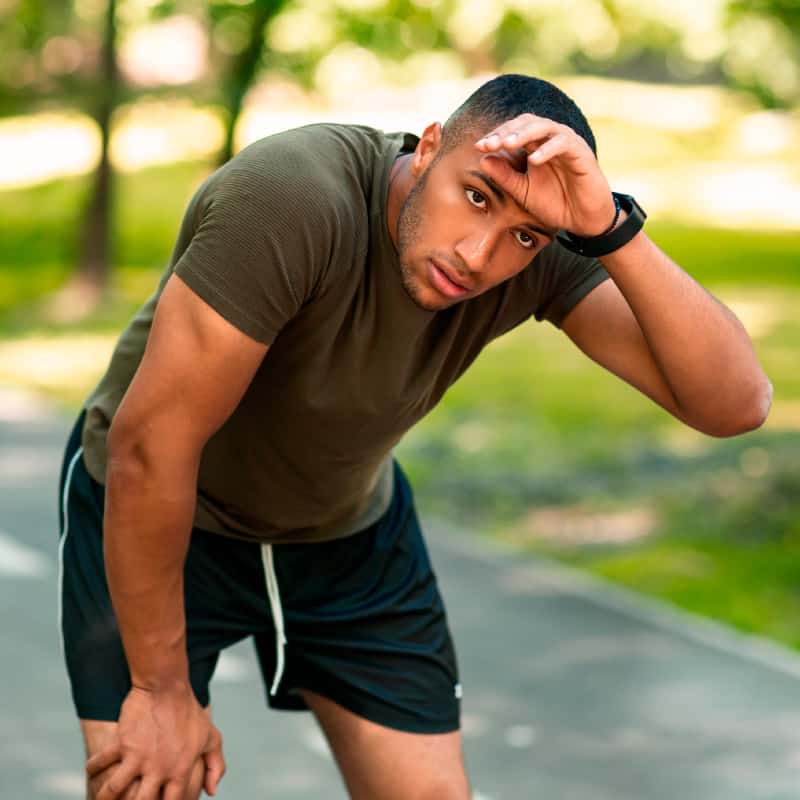This Dr. Axe content is medically reviewed or fact checked to ensure factually accurate information.
With strict editorial sourcing guidelines, we only link to academic research institutions, reputable media sites and, when research is available, medically peer-reviewed studies. Note that the numbers in parentheses (1, 2, etc.) are clickable links to these studies.
The information in our articles is NOT intended to replace a one-on-one relationship with a qualified health care professional and is not intended as medical advice.
This article is based on scientific evidence, written by experts and fact checked by our trained editorial staff. Note that the numbers in parentheses (1, 2, etc.) are clickable links to medically peer-reviewed studies.
Our team includes licensed nutritionists and dietitians, certified health education specialists, as well as certified strength and conditioning specialists, personal trainers and corrective exercise specialists. Our team aims to be not only thorough with its research, but also objective and unbiased.
The information in our articles is NOT intended to replace a one-on-one relationship with a qualified health care professional and is not intended as medical advice.
What Causes Crepey Skin & How Can You Treat (& Prevent) It?
July 16, 2024

Have you noticed areas of your skin developing a thin, wrinkled texture, resembling crepe paper? This is likely crepey skin, a common concern that affects many as we age or due to other factors.
It typically affects areas exposed to frequent sun, like the face, neck, upper arms, inner thighs and knees.
While there’s no magic bullet, understanding crepey skin, often referred to as “crepe skin,” and taking preventative measures can make a big difference.
So what is crepey skin, what causes it, and how can you prevent and address it? Let’s find out.
What Is Crepey Skin? (What Does It Look Like?)
Crepey skin is characterized by its thin, delicate and finely wrinkled appearance. It is a result of thinning skin that loses its elasticity and firmness.
The texture of crepey skin can be likened to crinkled paper or a crepe fabric, hence its name.
Unlike wrinkles that form around the eyes and mouth from repeated muscle movements, crepey skin affects larger areas and feels noticeably delicate. Common areas where crepey skin appears include the neck, inner arms, knees, hands and under the eyes.
Causes and Risk Factors
While aging is a natural culprit for crepey skin, sun damage reigns supreme as the leading cause.
The sun’s ultraviolet (UV) rays break down collagen and elastin, the proteins responsible for maintaining skin’s elasticity and structure. This breakdown leads to loose, thin skin prone to crepey wrinkles as the fibers weaken and skin loses its ability to bounce back.
Here is more on the factors that can lead to crepey skins, as well as fine lines and wrinkles.
1. Aging
As we age, our skin produces less collagen and elastin, the proteins responsible for maintaining skin’s firmness and elasticity. This natural decline leads to thinner, less resilient skin.
2. Sun exposure
Prolonged exposure to ultraviolet (UV) rays breaks down collagen and elastin fibers in the skin, accelerating the aging process and promoting the development of crepey skin.
3. Dehydration
Lack of moisture can make skin more susceptible to crepey texture. Hydrated skin maintains its elasticity better than dry skin.
Dry skin lacks the plumpness and resilience needed to maintain a smooth, youthful appearance.
4. Weight fluctuations
Rapid weight loss or gain can stretch the skin, causing it to lose its elasticity and leading to a crepey appearance. Particularly during rapid weight loss, skin can become saggy and more prone to look thinner and cracked.
5. Genetics
Your genetic makeup can influence how your skin ages and how susceptible you are to developing crepey skin.
Some people are genetically predisposed to having thinner skin or losing collagen more rapidly, making them more susceptible to crepey skin.
6. Smoking
The chemicals in cigarettes damage collagen and elastin, accelerating skin aging and contributing to a crepey texture.
Smoking also restricts blood flow to the skin, hindering its ability to repair and regenerate and negatively affecting the delivery of nutrients and oxygen needed for healthy skin cell function. It also accelerates collagen breakdown.
Other crepey skin causes and risk factors include:
- drinking alcohol
- dry atmosphere
- certain medications
- sleep deprivation
- pollution exposure
- poor diet
- stress
- hormonal fluctuations
- conditions such as Ehlers-Danlos syndrome, Werner syndrome and Hutchinson-Gilford progeria syndrome
How to Prevent Crepey Skin
The good news is that there are proactive steps you can take to prevent or minimize the appearance of crepey skin. It involves adopting a comprehensive skin care routine and making healthy lifestyle choices.
1. Sun protection
Wearing sunscreen with at least SPF 30 daily can protect your skin from harmful UV rays. Broad-spectrum sunscreens are particularly effective in preventing sun damage.
Make daily sunscreen application a non-negotiable part of your routine. Choose a broad-spectrum SPF 30 or higher, and reapply every two hours, especially after swimming or sweating.
Religiously apply sunscreen daily, even on cloudy days. Sun hats and protective clothing offer additional defense.
2. Moisturize regularly
Keeping your skin hydrated with a good moisturizer helps maintain its elasticity. Look for products containing hyaluronic acid, glycerin, peptides and ceramides.
Use a rich, hydrating moisturizer daily to keep your skin plump and supple. Here are some homemade recipes to try:
- DIY Face Moisturizer with Shea Butter & Essential Oils
- DIY Moisturizer for Dry Skin with Lavender Oil
- DIY Moisturizer for Oily Skin with All-Natural Ingredients
3. Stay hydrated
Drinking plenty of water ensures that your skin stays hydrated from within. Aim for at least eight glasses of water a day.
4. Healthy diet
Consuming a diet rich in antioxidants, vitamins and minerals supports skin health.
Foods like fruits, vegetables, nuts and fish provide essential nutrients that promote skin elasticity. These are among the best anti-aging foods and collagen-rich foods around.
A diet rich in fruits, vegetables and whole grains provides your skin with the nutrients it needs to stay healthy and resilient.
You also want to make sure you get enough of the best minerals and vitamins for skin in your diet, including:
- collagen
- vitamin D
- omega-3
- biotin
- vitamin A
- vitamin C
- vitamin E
- curcumin
5. Avoid smoking
Quitting smoking can prevent further damage to your skin and improve its overall health.
6. Gentle skin care
Use gentle cleansers, and avoid harsh exfoliants that can damage the skin barrier. Incorporate products with ingredients like retinoids, peptides and antioxidants to support skin health.
7. Maintain a healthy weight
Gradual weight loss and maintaining a healthy weight are crucial to minimize damage to the skin’s support structure. Sudden, drastic weight loss (or gain) can actually be a cause of crepey skin, so if you’re looking to lose weight, doing it in a healthy, steady manner is more beneficial for the health of your skin.
Focus on gradual, healthy weight loss or management to avoid stretching and damaging your skin.
8. Prioritize sleep
According to dermatologists, one of the best ways to support the elasticity of your skin is to get a good night’s sleep. That means a solid seven to nine hours per night.
This shouldn’t come as a surprise considering just about every aspect of health is connected to sleep in some way, and that’s especially true for the skin.
For instance, a 2015 study measured signs of skin aging on 60 healthy women who were either poor sleepers (less than five hours per night) or good sleepers (more than five hours per night, typically seven to nine hours per night). The poor sleepers “had significantly higher levels” of transepidermal water loss, while the good sleepers “had 30% greater barrier recovery compared with poor sleepers.”
The researchers concluded that the “study indicates that chronic poor sleep quality is associated with increased signs of intrinsic ageing, diminished skin barrier function and lower satisfaction with appearance.”
That’s not all. Research also shows that regularly going to bed late “damages the skin barrier and skin structure” and “reduces the diversity and composition of facial bacterial microbiome.”
9. Manage stress
Chronic stress puts a lot of pressure on the skin and does way more harm than good, according to the American Academy of Dermatology Association. High cortisol levels — the stress hormone — can contribute to crepey skin and a whole host of other skin issues, including dryness, dullness, sagging, increased sensitivity and redness.
As noted in the New York Times, “chronic exposure to cortisol also inhibits the production of hyaluronic acid and collagen,” which in turn can play a role in developing crepey skin.
Try natural stress relievers such as yoga, meditation, acupuncture, journaling and more.
10. Exercise
One of the benefits of exercise is its ability to help nourish skin and promote collagen production by increasing blood flow. IN addition, performing exercises or workouts targeted on specific areas of the body prone to crepey skin or skin damage can tighten and strengthen the skin, helping it maintain a healthy look.
Treatment
If you already have crepey skin, there are several treatments available to improve its appearance:
1. Topical treatments
Over-the-counter and prescription products can be effective in reducing the appearance of crepey skin. For instance, retinoids, alpha hydroxy acids (AHAs) and peptides can stimulate collagen production and improve skin texture.
Certain creams containing retinol, peptides or antioxidants may help thicken and firm the skin.
2. Professional treatments
Dermatologists offer various treatments, such as chemical peels, laser therapy and microdermabrasion. These procedures can enhance collagen production and improve skin texture.
These treatments remove the outer layer of skin, encouraging new cell growth and a smoother appearance.
Certain lasers can tighten the skin and promote collagen production for a more youthful look. For instance, fractional laser treatments can stimulate collagen production and improve skin texture.
3. Radiofrequency and ultrasound therapy
These non-invasive treatments use energy to stimulate collagen production deep within the skin, improving its firmness and elasticity.
4. Fillers and injections
Hyaluronic acid fillers can be injected into crepey skin to plump and smooth the area, providing immediate and noticeable results and reducing wrinkle visibility.
5. Microneedling
Microneedling involves tiny needles creating micro-injuries in the skin, stimulating collagen production and improving skin texture over time. This minimally invasive procedure creates tiny punctures in the skin, which then triggers the collagen production.
Other potential treatments for crepey skin include:
- lactic acid
- glycolic acid
- malic acid
- citric acid
- tartaric acid
- coconut oil
- avocado oil
- cocoa butter
- olive oil
- niacinamide
- polyhydroxy acids
- protein foods
- massaging the skin
- anti-aging supplements, such as bone broth, fish oil, whey protein, coenzyme Q10 and more
- CoolSculpting
- other skin exfoliators and moisturizers
Conclusion
- Crepey skin is a common sign of aging or sun damage, but it doesn’t have to define your appearance.
- Crepey skin can be a source of concern, but understanding its causes and taking proactive steps can help manage and improve its appearance.
- By adopting a comprehensive skin care routine, protecting your skin from sun damage, staying hydrated and considering professional treatments, you can maintain healthier, more resilient skin.
- Remember, healthy skin starts from within, so prioritize a balanced lifestyle for optimal results. It’s never too late to start caring for your skin and taking steps to prevent or treat crepey skin effectively.
- Consistency is key! Develop a healthy skin care routine and sun protection habits for long-lasting results.
- If you’re concerned about crepey skin, consult a dermatologist to discuss treatment options tailored to your specific needs.








